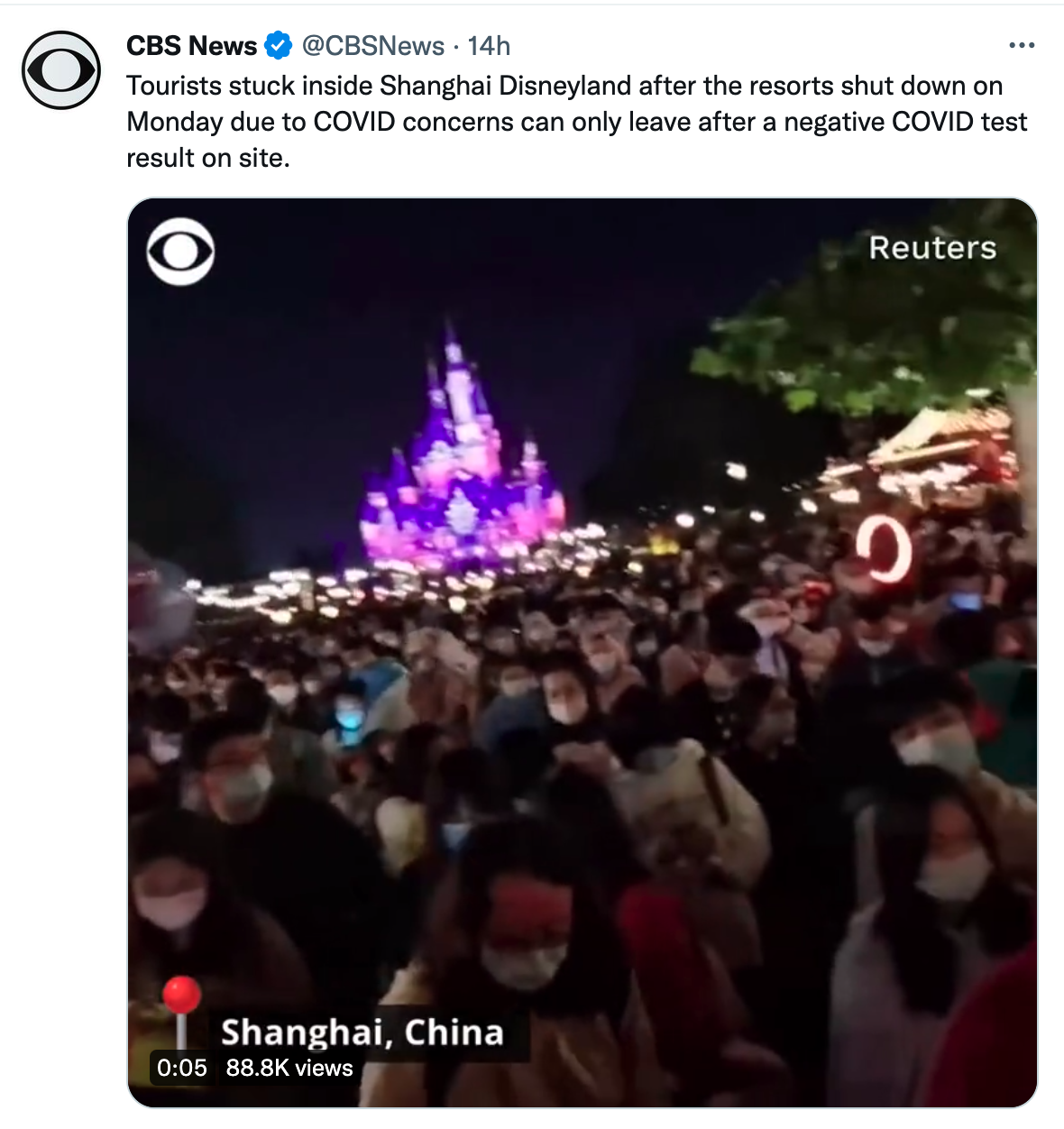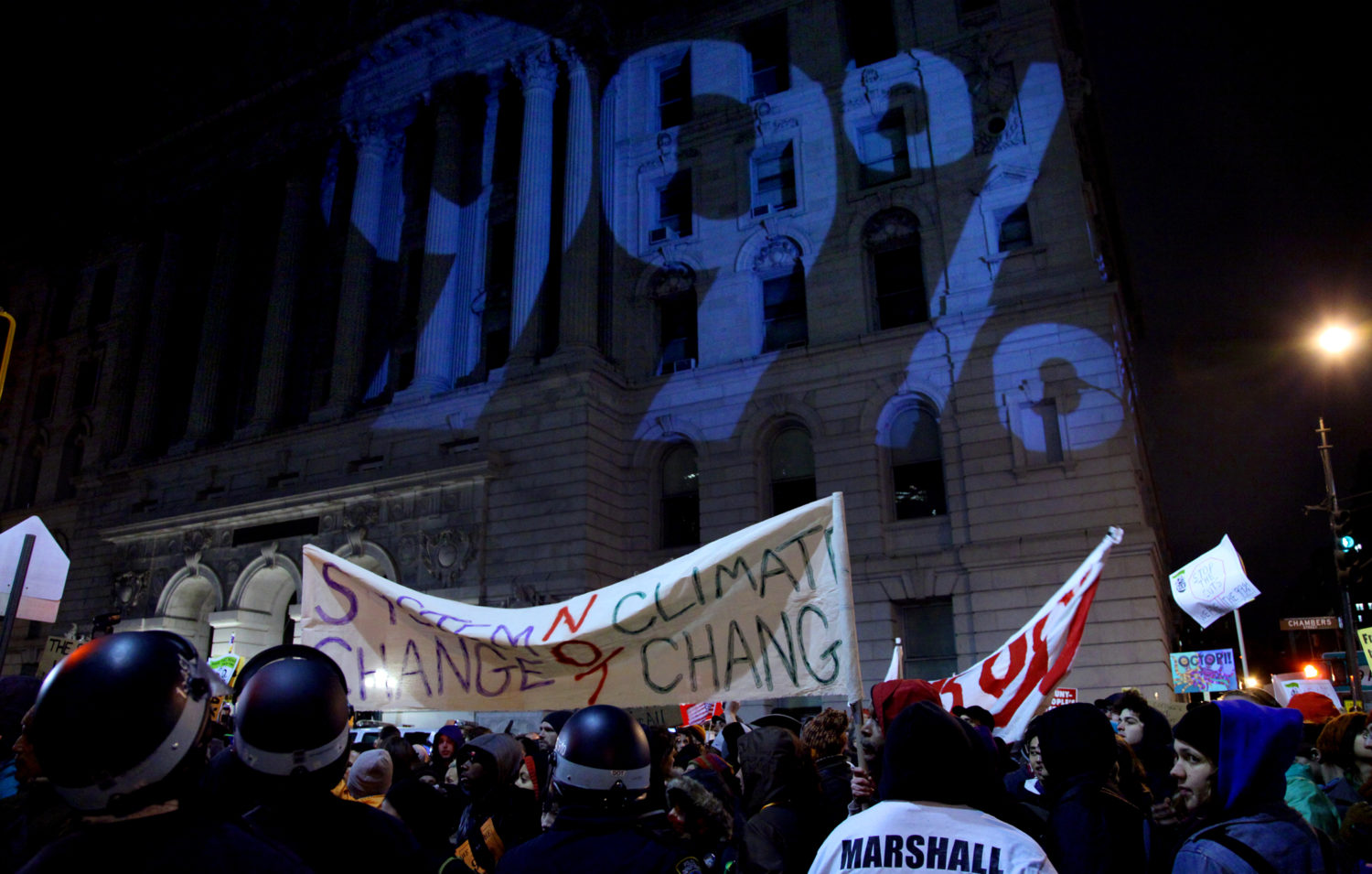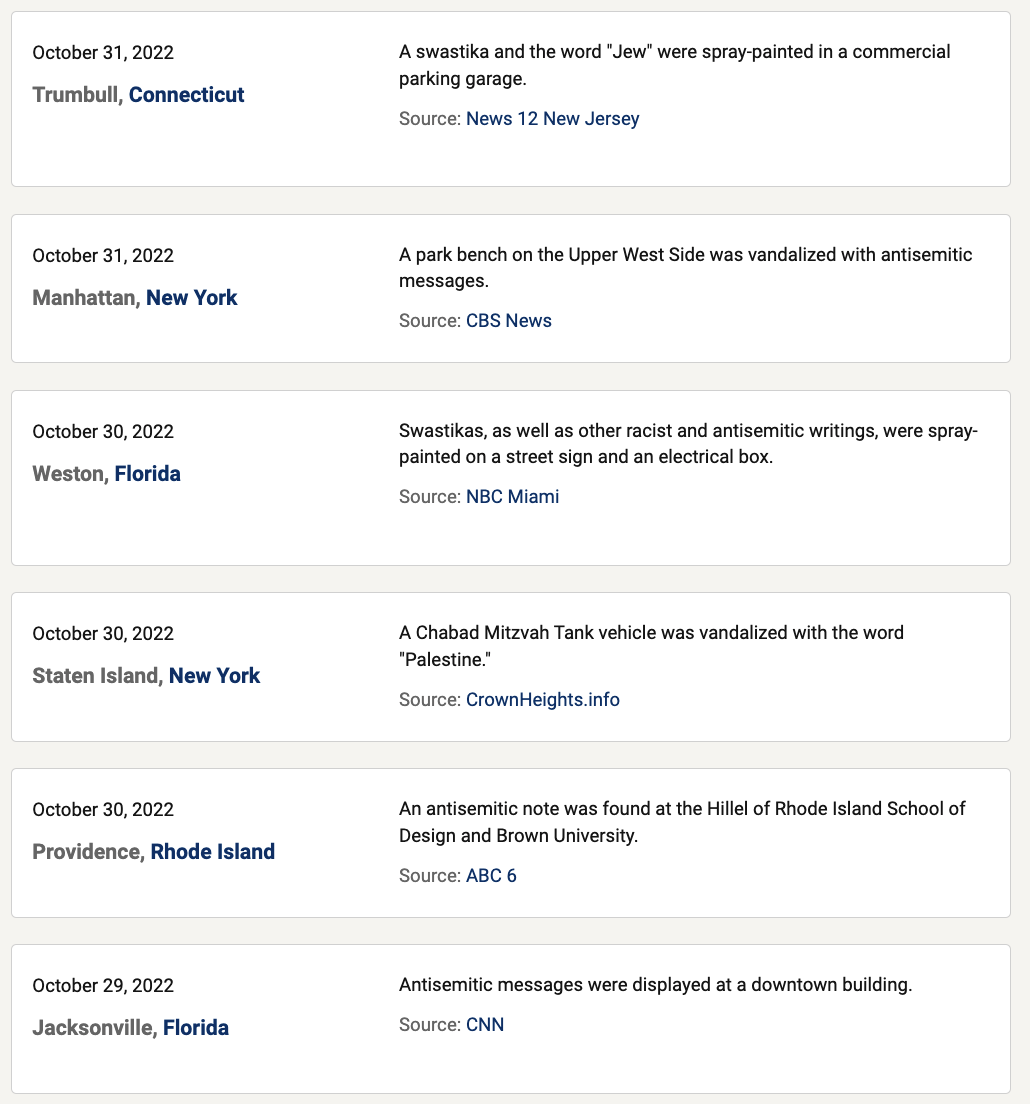
The Morning Meeting with Al Tompkins is a daily Poynter briefing of story ideas worth considering and other timely context for journalists, written by senior faculty Al Tompkins. Sign up here to have it delivered to your inbox every weekday morning.
The weekend incident in Jacksonville where somebody projected an anti-Jewish message onto a tall building in full view of a football game crowd is an example of a tactic called “projection bombing.” The sheriff’s department information officer T.N. Dash wrote an email saying:
At this time, the Sheriff’s Office has not identified any crimes having been committed; the comments displayed do not include any type of threat and are protected by the First Amendment.”
“We will continue to monitor any reports of this nature to determine if they rise to (the) level of a criminal nature.”
The FBI is also investigating, according to FBI Jacksonville Special Agent in Charge Sherri Onks:
“Investigating these acts remains a top priority for the FBI because hate crimes are not only an attack on the victim – these acts are meant to threaten and intimidate an entire community.”
Using projections is not a new tactic. In 2011, Occupy Wall Street protestors projected messages onto a New York City skyscraper. The guy behind that event explained how he pulled it off.
Projection bombing may involve high-lumen projectors that can sell for more than $10,000, but it does not have to. Some online tutorials are aimed at protestors who use projectors that are not much brighter than practically any office might have in the conference room. The key, the tutorials say, is to project onto a dark, plain structure.
Protestors have been using projection bombing in Europe for years. In 2018, the Guardian spoke with Nick Dearden, “a veteran projection bomber” who organized several high-profile projection stunts including one on the walls of Parliament.
Dearden recruited an anonymous guerrilla projector operator who had contacted him. They threw “#REFUGEES WELCOME” on to the white cliffs of Dover just before a far-right rally in the town. Using a standard, powerful projector and some smart software to prevent distortion, the man set up a tripod on the beach below the cliffs.
Last year, the same man turned up at Britain’s most popular projection bombsite; halfway along Westminster Bridge, he projected the words, “Say no to Trump” on to the Houses of Parliament, the day before MPs debated the president’s proposed state visit. “We were really nervous about the police, but it looked like we were just taking pictures,” Dearden recalls.
All of this technology enables protestors, including hate groups, to project their words onto walls that they do not own or have permission to use. And there appears to be little to stop them. It is just the latest way for haters to spread hate. Antisemitic incidents in the United States have been on the rise for years, with 941 incidents in 2015 and 2,717 tracked in 2021 by the Anti-Defamation League. The ADL keeps a constantly updated list of such attacks. Click on the image below to get access. This screenshot shows hate messages from just the last few days.
What journalists need to know about the Fed’s interest rate decision today
The Federal Reserve board will vote on the latest interest rate increase today, and a 0.75% increase appears likely. Eventually, such an increase will push everything from mortgage rates and car loan interest rates to credit card interest rates higher. The key question is how much higher will the Fed go if this increase does not result in a lower inflation rate fairly quickly?
The U.S. central bank has raised its rate 3% since March. Three of those increases were 0.75%, which are meant to shock the economy up or down. So far, the inflation rate has shrugged off the increases.
Credit cards with varying rates (and most are) key their interest on balances to the Fed’s benchmark rate. CNBC said:
Annual percentage rates are “closing in on 19%,” on average, up from 16.3% at the beginning of the year, according to Bankrate.Further, households are increasingly leaning on credit cards to afford basic necessities since incomes have not kept pace with inflation.
The average interest rate on a five-year new car loan is currently 5.63%, up from 3.86% at the beginning of the year and could surpass 6% with the Fed’s next move, although consumers with higher credit scores may be able to secure better loan terms.
If you are looking for ways to leverage rising interest rates to your benefit, some online banks are offering savings accounts at 3% or more. Your local bank probably still offers less than 1%. Some of the higher interest rates require a minimum balance of several thousand dollars.
COVID concerns lock people inside Shanghai Disneyland
You have heard of people being locked out of someplace because of COVID-19, but this one went a lot further.

(Twitter)
The BBC reported:
“It comes after Shanghai reported 10 locally transmitted cases on Saturday.”
The BBC added:
Millions of people are under 200 different lockdowns in China, as of October 24, as the country of 1.45 billion consistently records more than 1,000 new Covid cases a day. The numbers are seen as relatively small outbreaks in other parts of the world.
However, earlier this month Chinese President Xi Jinping signaled that there would be no easing up of the zero-Covid policy — which aims to wipe out all outbreaks — calling it a “people’s war to stop the spread of the virus”.
Gasoline prices rise for the first time in more than two weeks
This is not what democrats are hoping for a week before election day. Gasoline prices inched up this week. The average national pump price inched up to $3.761 a gallon and supplies, especially on the East Coast, are tight.
Food prices increase, but so do profits
The New York Times points out that while food prices are increasing, and restaurants and other food companies say they have to raise prices to cover those costs, earnings reports show some of the biggest names in the industry posting big profits. The Times story raises the possibility that these companies are raising the prices to boost profits, not just to cover higher costs. Airlines, soft drink companies, credit card companies, hotels and fast-service restaurants all say consumers have money and are willing to spend it even as prices rise.
40% of U.S. households will pay no federal income taxes this year
The Tax Policy Center says four out of 10 American households will end 2022 without paying any federal income taxes. That amounts to 72.5 million households. What’s more, in the years ahead, even smaller percentages of households will be carrying the federal tax burden.
One reason for the big decrease is that the 2022 standard tax deduction is going up from last year. MarketWatch provides more details on how these numbers shake out.
I wonder how many people who complain about high federal government taxes realize they are not paying any federal income taxes.









